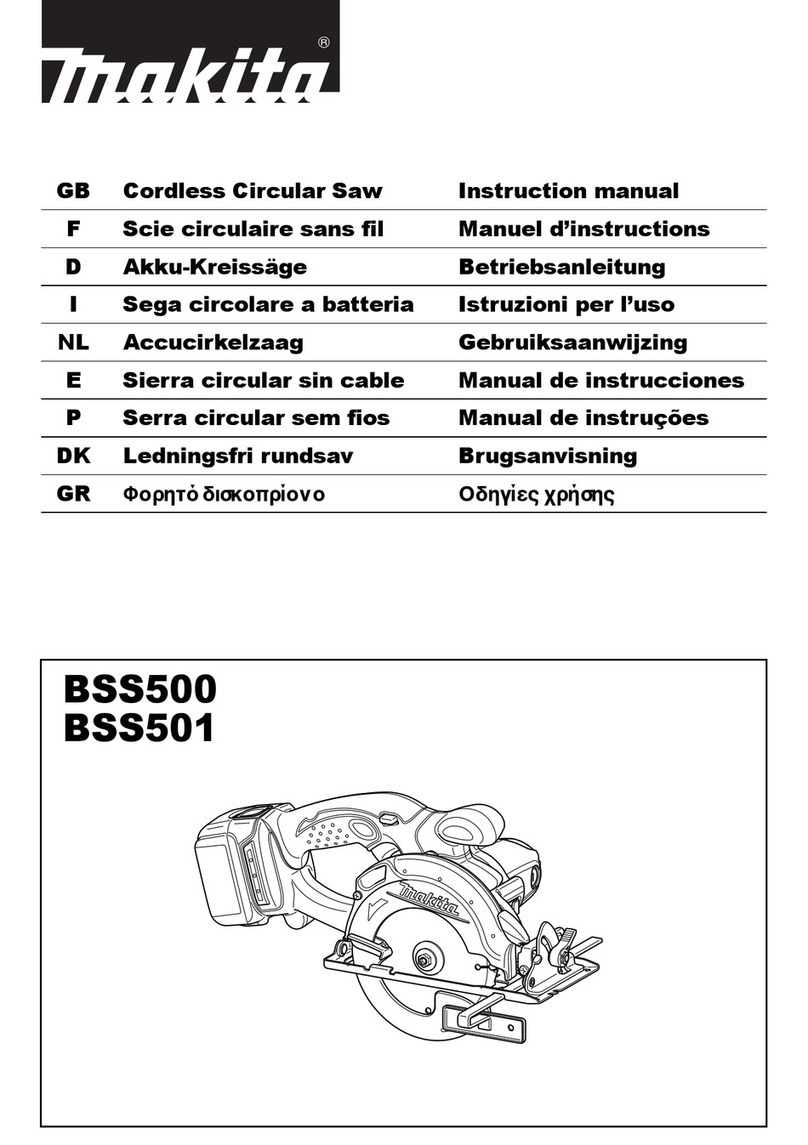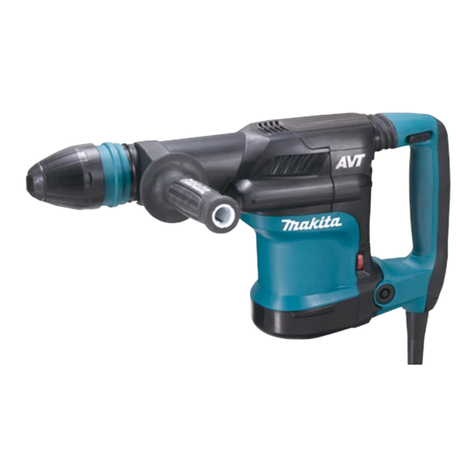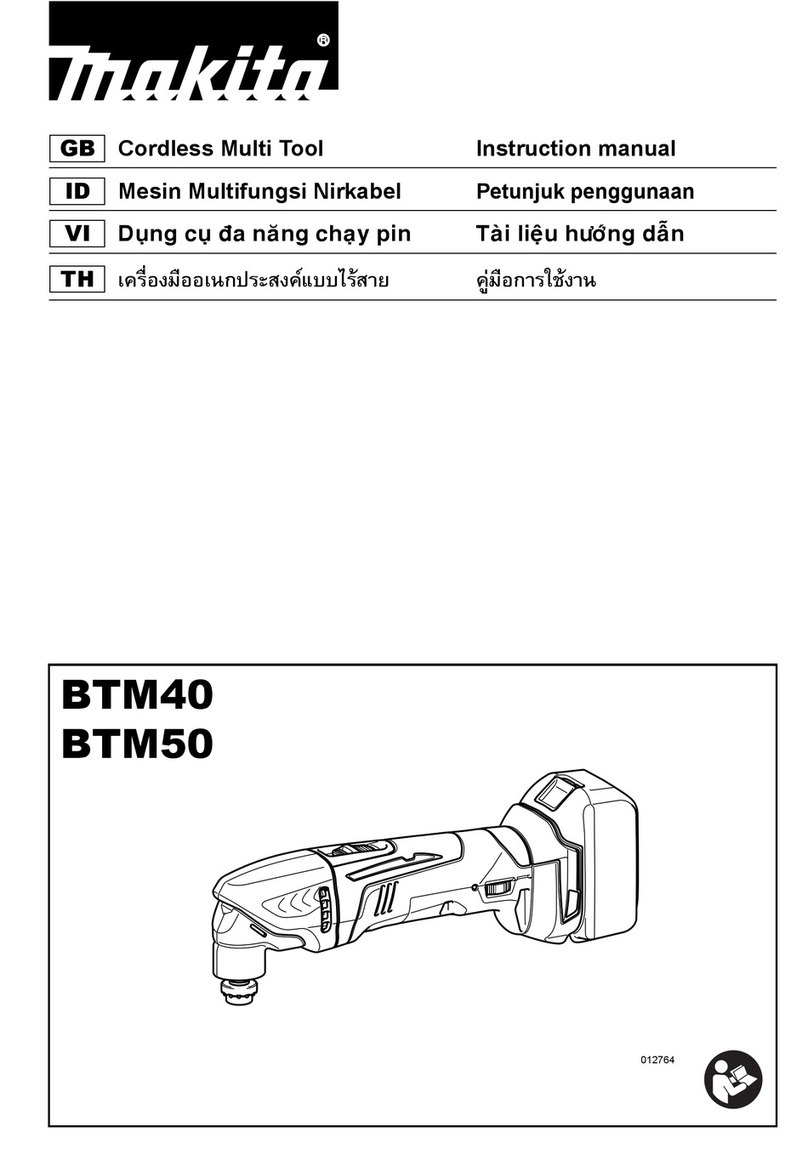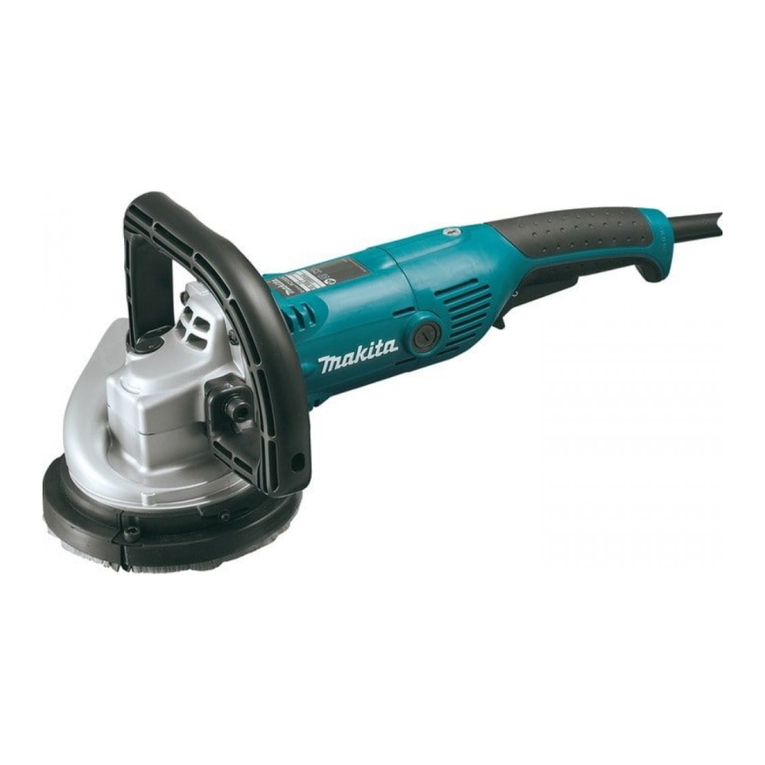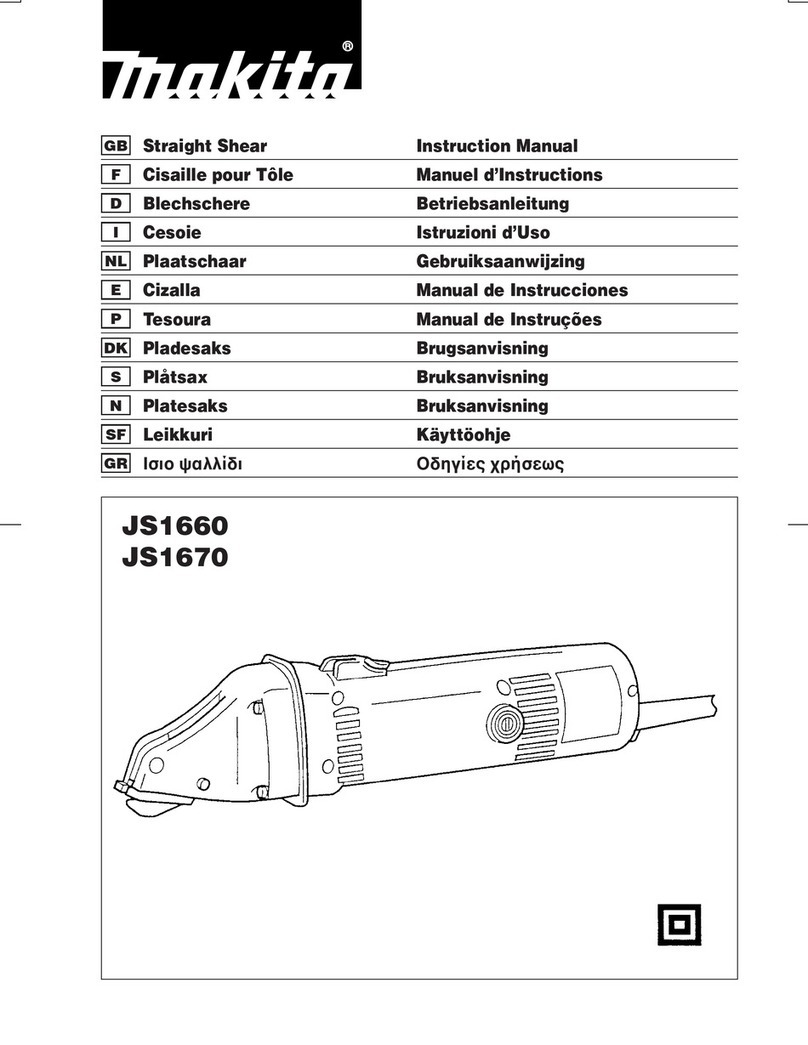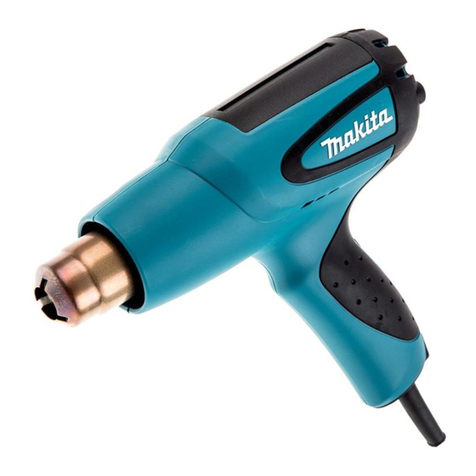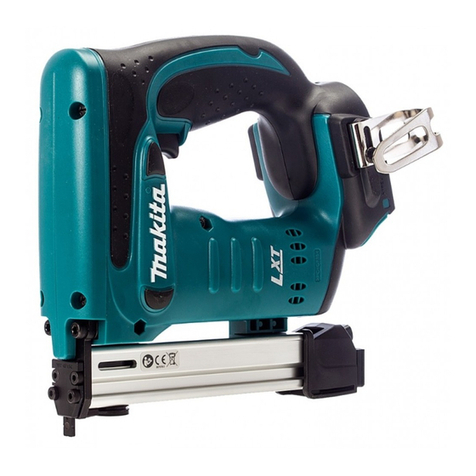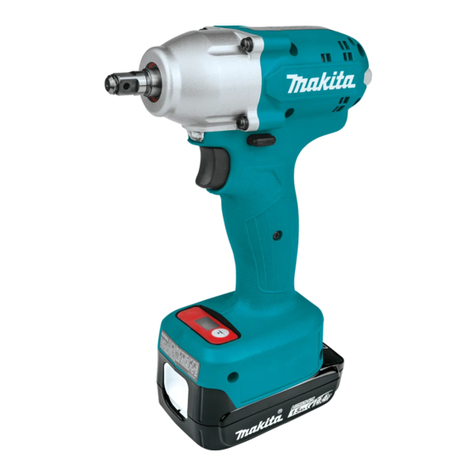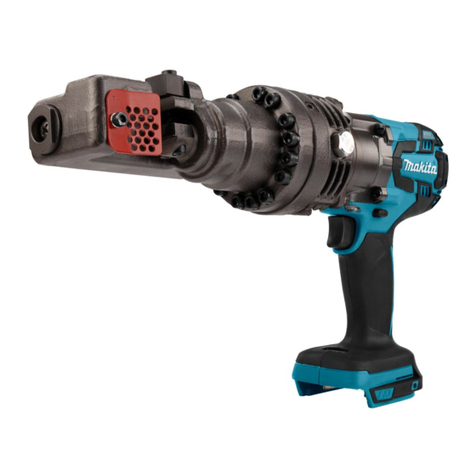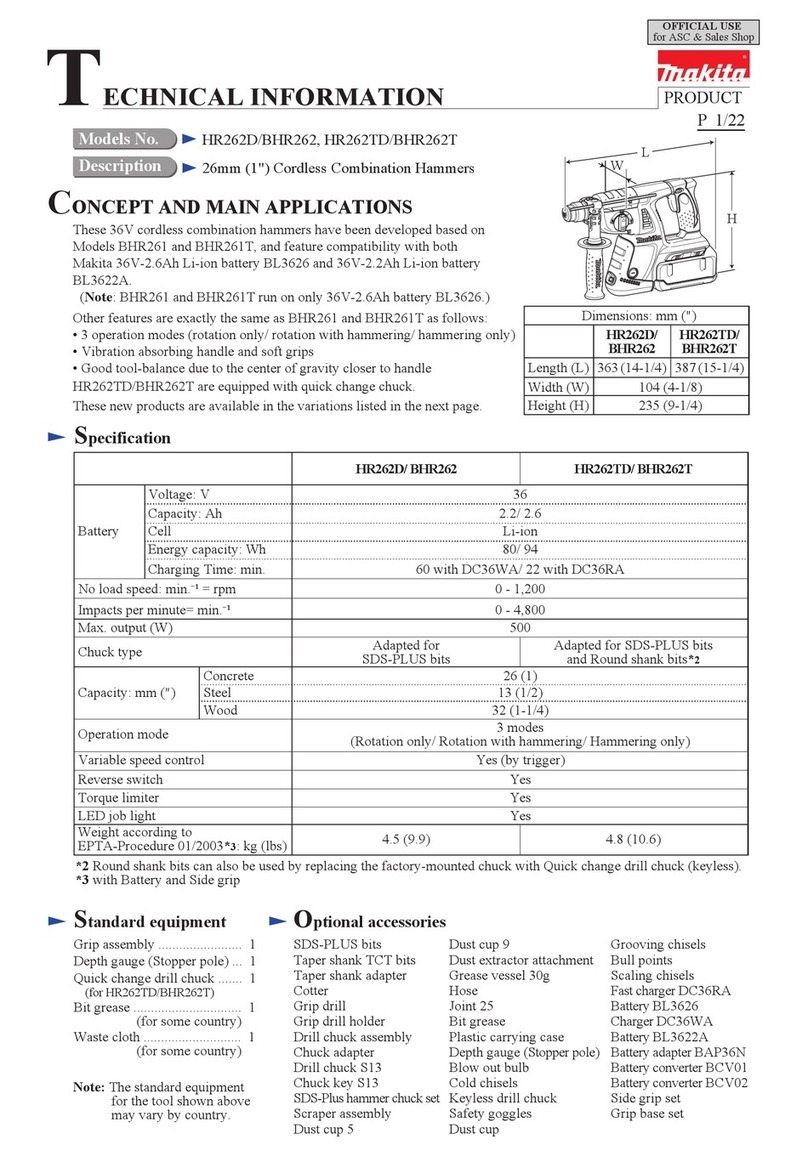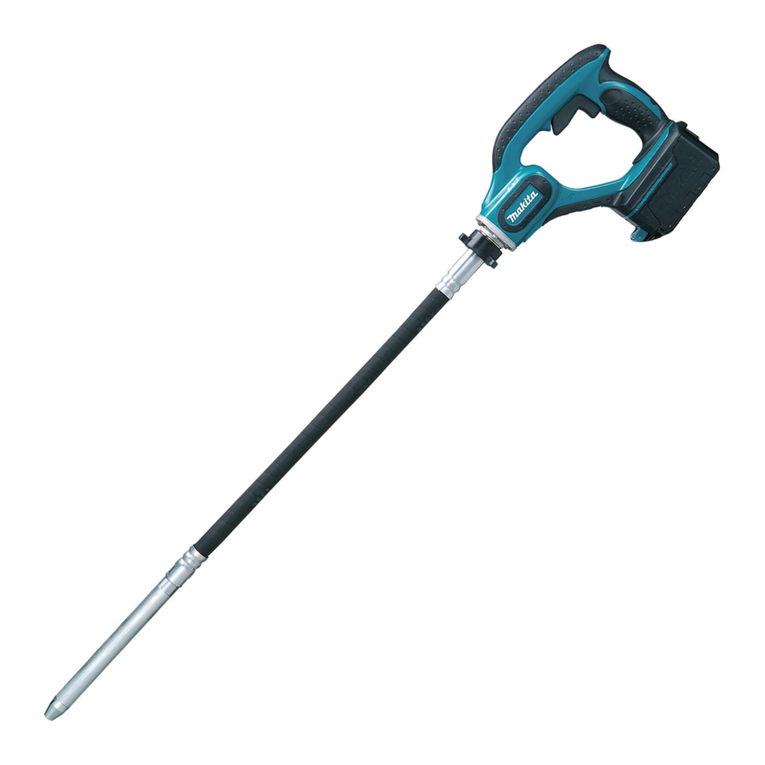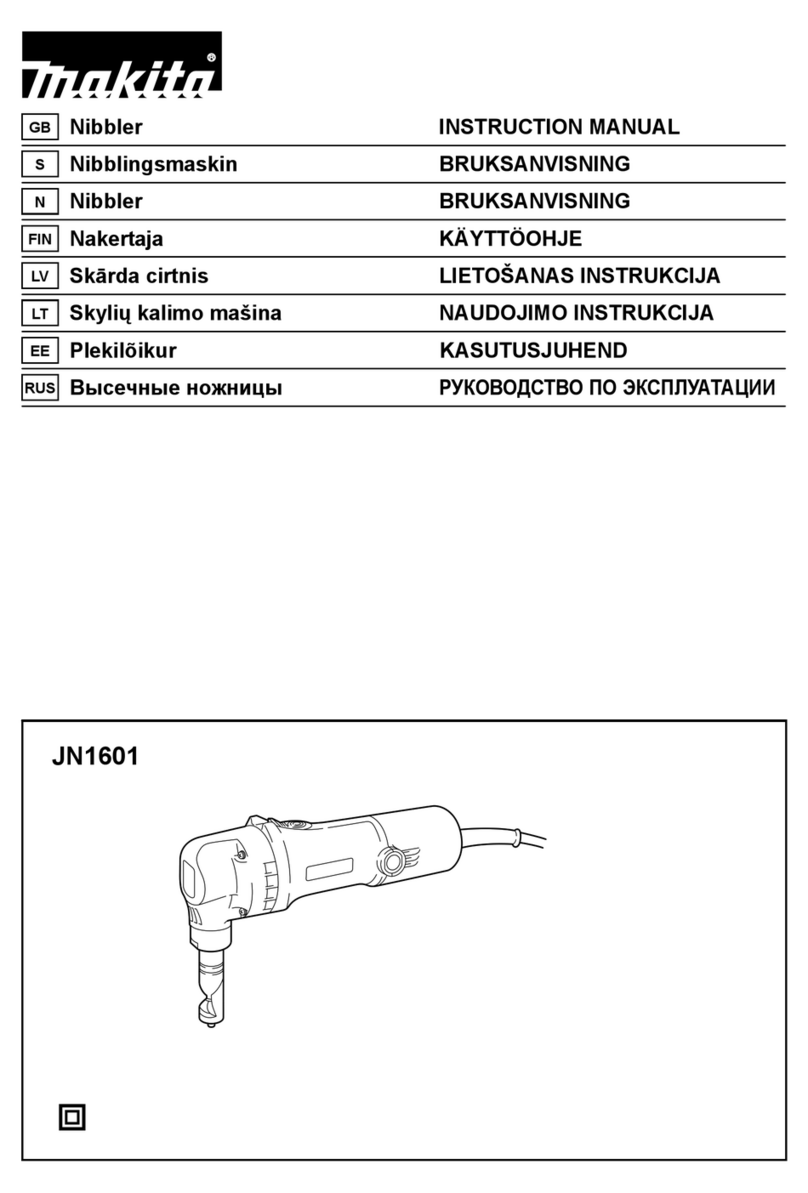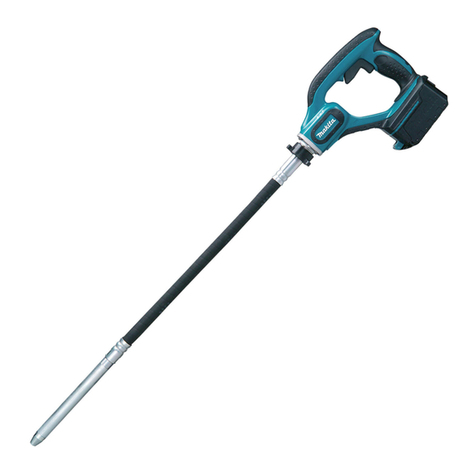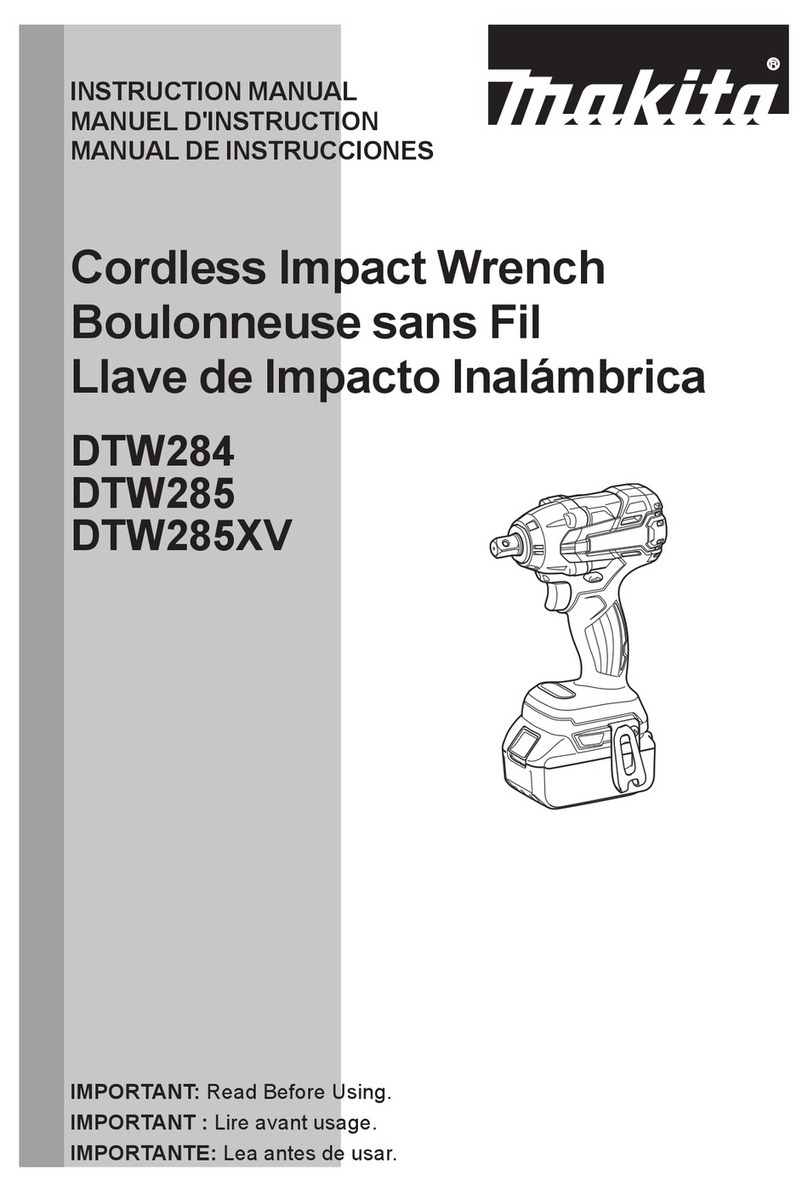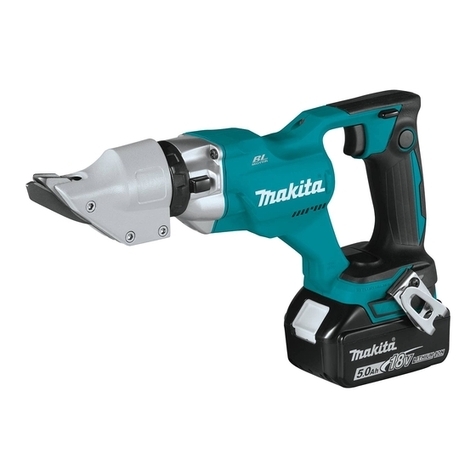
8ENGLISH
SAFETY WARNINGS
Pneumatic nailer/stapler safety
warnings
WARNING: WARNING Read all safety warn-
ings and all instructions.Failuretofollowthe
warningsandinstructionsmayresultinseriousinjury,
electricshockand/orre.
Save all warnings and instruc-
tions for future reference.
Forpersonalsafetyandproperoperationandmaintenance
ofthetool,readthisinstructionmanualbeforeusingthetool.
General safety
1.
Do not permit those uninstructed to use the tool.
2. No horseplay. Respect the tool as a working
implement.
3. Do not operate when under the inuence of
alcohol, drugs or the like.
4. Never alter the tool.
Personal protective equipments
►Fig.1
1. Always wear safety glasses to protect your
eyes from dust or fastener injury.
WARNING: It is an employer's responsibility
to enforce the use of safety eye protection
equipment by the tool operators and by other
persons in the immediate working area.
For Australia and New Zealand only
Always wear safety glasses and face shield to
protect your eyes from dust or fastener injury.
Thesafetyglassesandthefaceshieldshould
conformwiththerequirementsofAS/NZS1336.
2.
Wear hearing protection to protect your ears
against exhaust noise and head protection. Also
wear light but not loose clothing. Sleeves should be
buttoned or rolled up. No necktie should be worn.
Work area safety
1. Keep work area clean and well lit.Clutteredor
dark areas invite accidents.
2. Do not operate the tool in explosive atmo-
spheres, such as in the presence of ammable
liquids, gases or dust. Operating the tool can
createsparkswhichmayignitethedustorfumes.
3.
Keep children and bystanders away while operating
the tool. Distractions can cause you to lose control.
4. Illuminate the work area sufciently.
5.
There may be local regulations concerning
noise which must be complied with by keeping
noise levels within prescribed limits. In certain
cases, shutters should be used to contain noise.
Safety devices
1. Make sure all safety systems are in working
order before operation. Thetoolmustnotoper-
ateifonlythetriggerispulledorifonlythecontact
arm is pressed against the wood. It must work only
whenbothactionsareperformed.Testforpossible
faultyoperationwithfastenersunloadedandthe
pusherinfullypulledposition.
2. Do not play with the contact element: it pre-
vents accidental discharge, so it must be kept
on and not removed. Securing the trigger in the
ON position is also very dangerous. Never attempt
tofastenthetrigger.Donotoperateatoolifany
portionofthetooloperatingcontrolsisinoperable,
disconnected,altered,ornotworkingproperly.
3. Do not attempt to keep the contact element
depressed with tape or wire. Death or serious
injurymayoccur.
4. Always check contact element as instructed
in this manual. Fasteners may be driven acci-
dentallyifthesafetymechanismisnotworking
correctly.
Loading fasteners
1. Do not load the tool with fasteners when any
one of the operating controls is activated.
2. Use only fasteners specied in this manual.
Theuseofanyotherfastenersmaycausemal-
functionofthetool.
Power source
1. Never connect the tool to compressed air line
where the air pressure can exceed the suitable
air pressure range of the tool, specied in the
"SPECIFICATIONS" table, by 10%. Make sure
that the pressure supplied by the compressed air
system does not exceed the suitable air pressure
rangeofthetool.Settheairpressureinitiallyto
thelowervalueofthesuitableairpressurerange.
2. When using the tool operated by compressed
air, particular attention must be paid to avoid
exceeding the maximum allowable pressure.
3. Operate the tool at the lowest pressure
required for the application, in order to prevent
unnecessarily high noise levels, increased
wear and resulting failures.
4. Never use the tool with other than compressed
air.Ifbottledgas(carbondioxide,oxygen,
nitrogen,hydrogen,air,etc.)orcombustiblegas
(hydrogen,propane,acetylene,etc.)isusedasa
powersourceforthistool,thetoolwillexplodeand
causeseriousinjury.
5. Always disconnect the air hose and remove all
of the fasteners:
— when unattended;
—
beforeperforminganymaintenanceorrepair;
— beforecleaningajam;
— beforemovingthetooltoanewlocation.
6. Use only pneumatic tool oil specied in this
manual.
Operational safety
1. Always check the tool for its overall condition
and loose screws before operation. Tighten as
required.
2. Handle the tool carefully, as there is high pres-
sure inside the tool that can be dangerous if a
crack is caused by rough handling (dropping
or striking). Do not attempt to carve or engrave
on the tool.
3. Stop the operation immediately if you notice
something wrong or out of the ordinary with
the tool.Animproperlyfunctioningtoolmustnot
be used.
